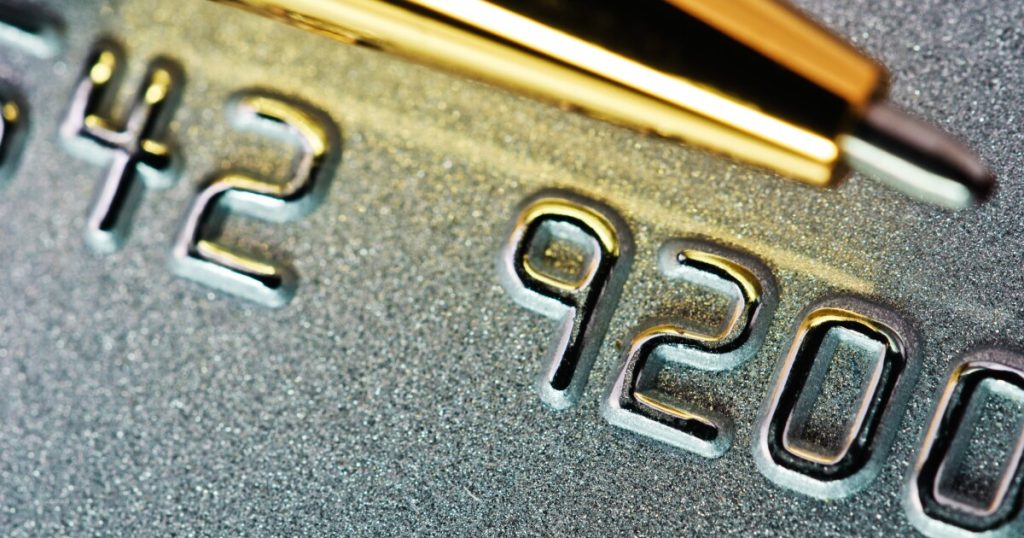Garry L. – stock.adobe.com
Does a credit card made from the panels of a retired Boeing 747 airplane spur consumers to use it more often?
Credit card issuers such as American Express, Apple, Capital One and JPMorgan Chase and manufacturers such as CompoSecure and Giesecke+Devrient have been
While there are signs that consumers like the more environmentally sound cards, there’s scant evidence that the cards spur more payment revenue.
What people want
Consumers gravitate toward metal cards and the rewards that are often offered in tandem, according to a global CompoSecure survey conducted by Capuchin Behavioral Science and provided to American Banker ahead of its publication. The survey queried 21,250 people in Australia, Brazil, Canada, China, France, Germany, Hong Kong, India, Indonesia, Italy, Japan, Mexico, Poland, Singapore, Turkey, the U.K. and the U.S.
Sixty-eight percent of respondents said they would select a bank card program over another — all else equal — if it offered a metal card. That jumped to 87% for ultra-high-net-worth individuals, and 77% for respondents between the ages of 18 and 25. In India, 90% of respondents favored a metal card over a non-metal card, followed by 86% of respondents in Turkey, 84% in Indonesia, 81% in Mexico and 80% in Brazil, according to the survey.
But there is little data available as to whether these novel credit card materials actually drive more consumer spending separate from the perks and benefits that they offer, such as cashback or rewards points. “Our issuers keep that data to themselves,” said Jon Wilk, CEO and president of CompoSecure.
And rewards programs are many: About 70% of the approximately 4,000 credit card programs in the Consumer Financial Protections Bureau’s Terms of Credit Card Plans Survey database offered rewards as of May 2024, according to a
Giesecke+Devrient, which manufactures bank cards, cash handling systems and banknotes, created a metal credit card for a “premium” bank in India that later saw a 40% lift in consumption. “It was clear its return on investment was immediate,” said the company’s CEO Gabrielle Bugat.
Some analysts aren’t convinced that the card material drives additional spending, however. “It’s like a fashion statement,” said Nathan Hilt, managing director of global consulting firm Protiviti, comparing it to cell phone covers. “Not everyone needs a special cover for their phone, but some people do, and that’s a part of their [personal] statement… I’d say the same thing [about cards]. Just because you have a piece of plastic or a titanium card or you have diamonds on it, it doesn’t change your buying behavior.”
Daniela Hawkins, an associate partner and head of Capco’s payments practice, also questions whether the credit card material drives spending.
“From my perspective, I think that’s truly marking,” she said, but noted that “the card that is metal, which is obviously more expensive to produce, gives customers and business owners a sense of luxury.”
But that sense of luxury or personal ethos is important in driving credit card adoption with consumers, said Elias Ghanem, global head of Capgemini Research Institute for financial services. “Payment is ego, after all.”
At the end of the day, consumer’s credit cards — whether they are made of metal or personalized in other ways — help build emotions. And emotions are good for spending, Ghanem said.
“If you build emotions, [the credit card] becomes top of wallet,” he said. “We believe that card design [and] card personalization are an important piece of the decision to buy.”
CompSecure — which held more than 80% of the metal card market last year, according to ABI Research — doesn’t believe issuers will stop pairing luxury card materials with robust reward programs, Wilk said.
“Premium cards are still actually early in their life cycle,” he said, noting that CompoSecure produced about 31 million cards in 2023, compared with 36 million to 38 million metal cards and around 4 billion total cards produced industry-wide. ABI Research expects the number of metal cards issued annually to increase to 85.1 billion by 2028, up from 36.1 million in 2022.
“The banks use [the material] and wrap it around a program that includes other rewards and benefits that consumers value,” Wilk said. “Bringing that together with the premium form factor has created an experience in the market that we continue to see replicated.”
In the cards
The materials used in credit cards have evolved since the metal card was first introduced with the American Express Centurion — also known as the Black card — in 2003, CompoSecure’s Wilk said.
Brokerage firm Robinhood has a credit card made of solid gold. Delta and American Express have partnered twice to issue cards made from the panels of retired 747 airplanes. CompoSecure manufactures credit cards made of glass and German-based bank Trade Republic offers a metal credit card polished to look like a mirror. Revolut offers a reinforced steel card in rose gold and lavender, among other colors. And
Portfolios that deploy metal cards are growing at a rapid pace as financial institutions and fintechs look to create an elevated brand experience for their customers, Wilks said. “It helps create stronger acquisition of new customers and it helps drive spending for the cards becoming top of wallet. Those two drivers … are the lifeblood of the credit card business.”
The use of sustainable credit cards, such as cards
“That’s what the market is looking for — to differentiate. To feel more aspirational,” Bugat said.

